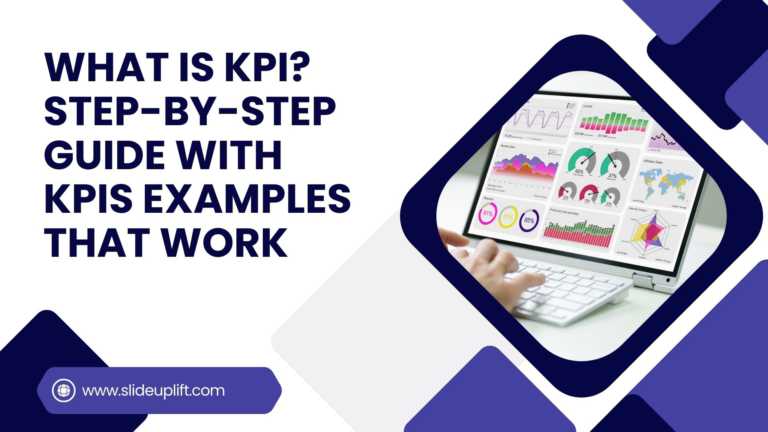Why Is Deprioritization Important For An Agile Team? – The Power Of Saying No To Projects
Most of us have felt the sting of an unmanageable workload. We’re at work, and the emails aren’t stopping. Urgent requests are piling up, deadlines are looming, feedback is due, and important meetings are on the horizon, and that’s before we forget everything else going on in our personal lives. Choosing which tasks require the most of our attention can be stressful and overwhelming. Here’s a scenario you’re probably familiar with: you’re drowning in projects. Despite this, your manager comes up to you with a new initiative and asks you to work on it, despite the fact that you’re already overburdened. You ignore the internal screams in your head and, to your surprise, hear yourself saying yes to this request. Why?
You may be a people pleaser, but there are a few psychological reasons why you always agree to help a coworker, or rather, avoid turning down their requests—even when your to-do list is already stacked.
In the heat of the moment, we lose the mental space and perspective to consider what truly needs to be done first – and frequently begin tasks that could have been on hold. However, one of the most effective ways to prioritize our work and focus on what matters begins with deprioritizing our unimportant work.
Saying no isn’t always difficult. Yet most people struggle with saying no to the right things.
Why Deprioritization Makes Sense At Workplace?
When we’re busy at work, with a seemingly never-ending to-do list to complete, it can be difficult to take a step back and determine which tasks are truly important.
And when we have a long to-do list and are struggling to meet deadlines, it’s understandable that we try to do a little bit of everything. We jump from task to task and constantly switch context, leaving us stressed and flustered while producing no tangible results.
Whether intentionally or unintentionally, we frequently prioritize the needs of others or the urgency of a task, but low-value tasks frequently take precedence over important and meaningful tasks.
We can be pulled in too many directions and trying to please everyone often results in pleasing no one. All of this is understandable, but it can be avoided. Much of the work we believe is urgent does not require our attention at all – at least not right now – and we must decide which tasks to prioritize and which to deprioritize.
Learning how to deprioritize can have a huge impact on your life. It can reduce stress, improve focus, increase productivity, instill a strong sense of accomplishment, and improve your work-life balance.
It is the best time for you to master deprioritization when a lot of people are struggling to adapt to the new remote working environment and are feeling overworked, and possibly on the verge of burnout.
5 Proven Strategies To Deprioritize Your Work Without Damaging Work Relationships
When our priorities begin to pile up, determining which tasks are most important can be easier said than done. To assist, we’ve outlined some quick and simple ways to say no at work:
1. Recognize The Value Of No
It’s more than just a strong word. ‘No’ allows us to reclaim control and emphasize the importance of our time. A well-placed no can acknowledge an already crowded calendar. While an outright refusal isn’t always possible, it can serve as a springboard for discussions about the relative importance of new tasks versus existing projects and responsibilities.
Phrasing your response to ask what other tasks can be put on hold or redistributed to be replaced by the latest project is a simple way to remind colleagues or team leaders of ongoing tasks that they may have forgotten. This can result in recognizing ongoing accomplishments, reassessing team workloads and priorities, and refocusing on core objectives.
2. Be Confident
Demonstrate your self-assurance by how you speak or present your response. It’s difficult enough to say no. Although giving an ambiguous response such as “I’ll try” or “I’ll get back to you” may feel helpful at the time, it can also create a false sense of expectation. If you already know the answer or have reasonable concerns that you can articulate, it may be better to discuss them now rather than later.
If you believe that having a little more time to explain your concerns would be beneficial, give examples such as “I’ll think about it, but I’m already working on X and Y projects at this moment.” “It’s an intriguing concept, but I believe X has tried something similar before.”
3. Be Firm
Stand your ground if a colleague is persistent in trying to persuade or cajole you into saying yes. Examine the reasons for your decision to say no in the first place. If nothing has changed, try to stick to your decision. Offering alternative solutions or directing them to somewhere or someone else who may be able to assist can be an excellent way to continue to assist without significantly increasing your workload.
4. Offer Alternatives
What our colleagues remember is not always what we say but how we say it. Developing the ability to say no constructively can help you a lot in the corporate world. You may be able to assist without adding additional stress or strain to your mental, physical, or emotional state by offering alternative solutions that require less time or resources.
5. Create A ‘Do-not -do’ list
What you don’t want to prioritize is just as important as what you do want to prioritize. A ‘do not do list is exactly that. The key is to think of it as a list of ‘not ever’ tasks rather than a list of ‘not now’ tasks.
Whatever method you use to prioritize your workload, you can include a clear section of tasks–or types of tasks–that should be removed for the time being.
For example, you have a very strong desire to work on a personal project but you have a lack of time or energy to prioritize it right now. It may help in this case to physically write on your to-do list that you will not be working on that project until next month.
The DOC Framework For Just Saying No
When you’re presented with a new, urgent, and potentially time-consuming project, use the DOC framework to determine whether you should prioritize or deprioritize it:
D: Distraction from day-to-day: First and foremost, will the new request divert your attention away from your regular responsibilities?
Consider whether the request is a supplement to existing tasks or a complete detour into another initiative. Remember that distractions, particularly those that force you to switch contexts, are detrimental to your cognitive load and ability to complete tasks.
O: Objectives: Many teams define yearly or quarterly goals to align higher-level objectives with the individual tasks that each team member is responsible for.
Longer-term goals might include “increase website traffic by [X] percent” or “create a customer portal to receive direct feedback.”
Individual projects and daily tasks must be included in these initiatives so that your work has a direct impact on the business.
Consider whether the new request fits into one of your goals. If this is the case, it may be worthwhile to take on the task, even if it may be a distraction from the day-to-day. If it doesn’t fit with a goal, get rid of it.
C: Consider the upside: Is there another benefit to carrying out the request if it does not fit an objective? Maybe you’re looking to take on new responsibilities, and this new task will help you demonstrate your abilities.
Currying relationship favor could be advantageous, and you are genetically predisposed to want to. But take care not to go down the people-pleasing path of self-destruction. Also, ask yourself if you will learn anything. And, as always, if there is no upside, why do it?
These parameters may come in handy if you’re forced to do something and can’t think of a reason why you shouldn’t, even if you don’t want to. Remember that it’s fine to want to be agreeable, but only if it doesn’t jeopardize your health and productivity.
The ability to say no is liberating, and the more you use it, the more at ease you will feel. So go ahead and say no.
Here are a few templates to help you with presentation productivity in PowerPoint:
Source: Project Management Presentation Collection By SlideUpLift
Source: Milestones Template By SlideUpLift
Source: Project Status Template By SlideUpLift
Source: Business Proposal Template By SlideUpLift
Wrapping It Up
You only have some hours in a week, so make sure you’re spending them on the things that are most important right now. Every week, choose one priority and stick to it.
Next week, you might be able to complete five projects. That doesn’t mean you should prioritize all five projects. Prioritization is the process of determining which activities you will devote your time to in the short term. Deprioritization is the process of determining which tasks should be postponed.
Prioritizing one project necessitates the deprioritization of another. That’s the way it is. You have the option of ignoring this reality or confronting it head-on.












